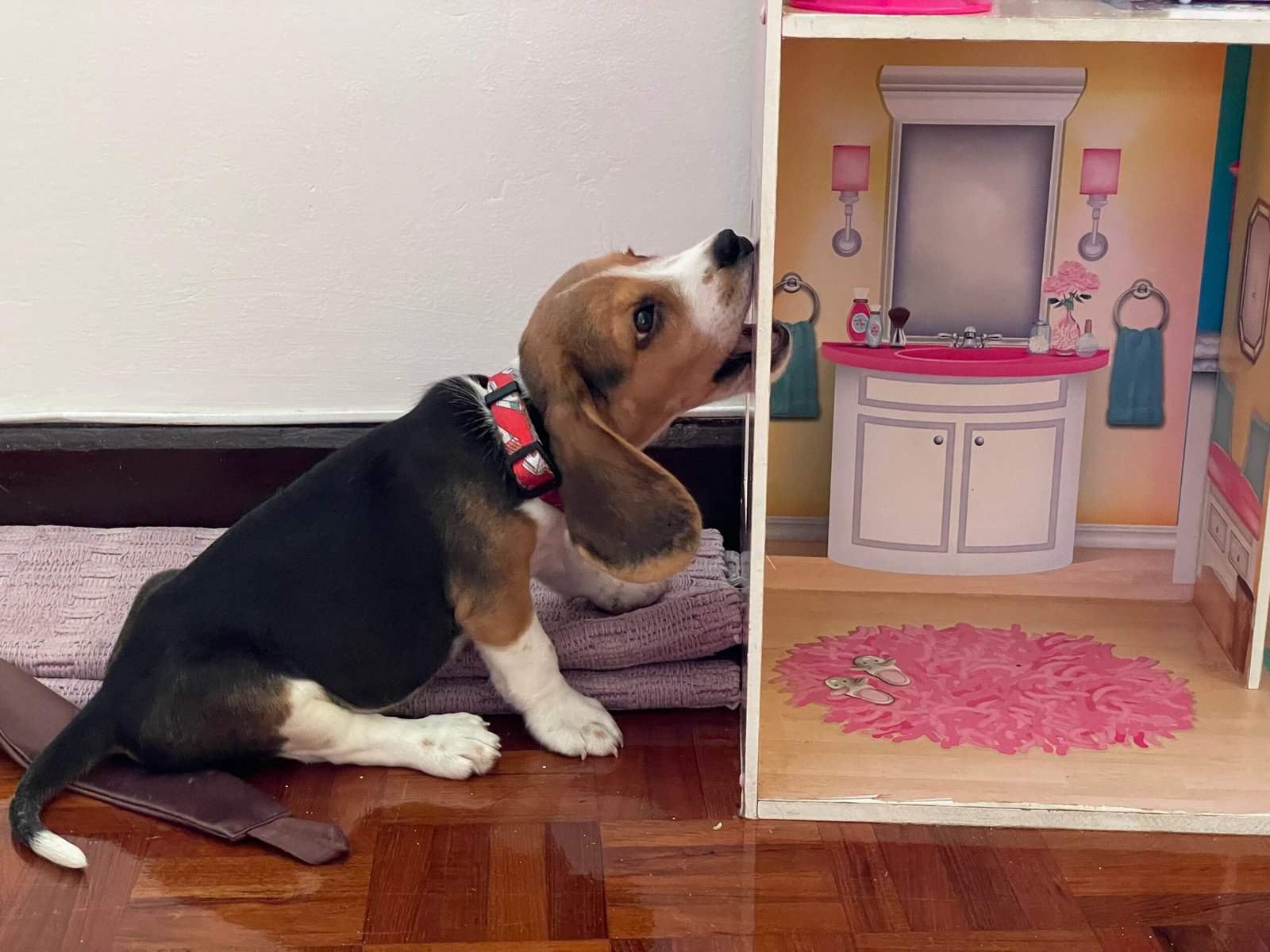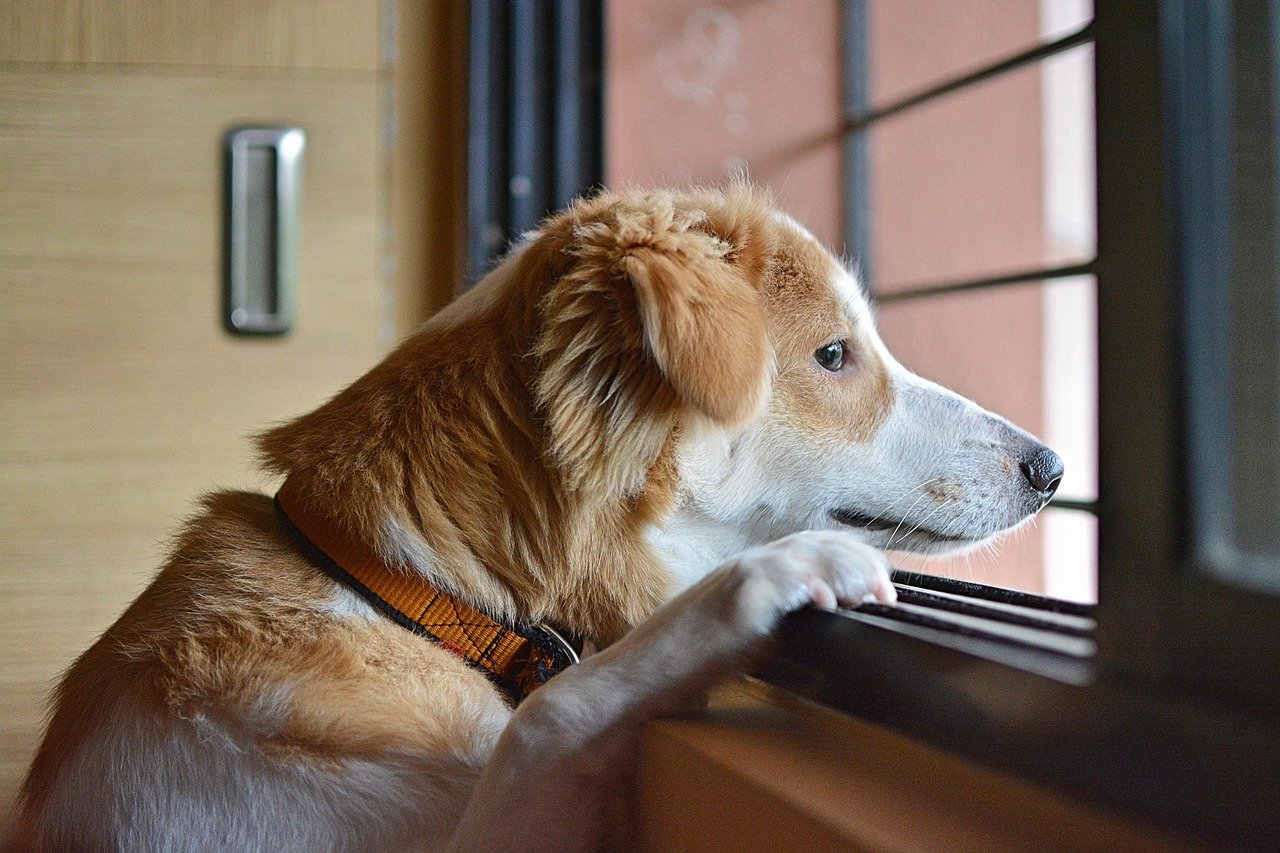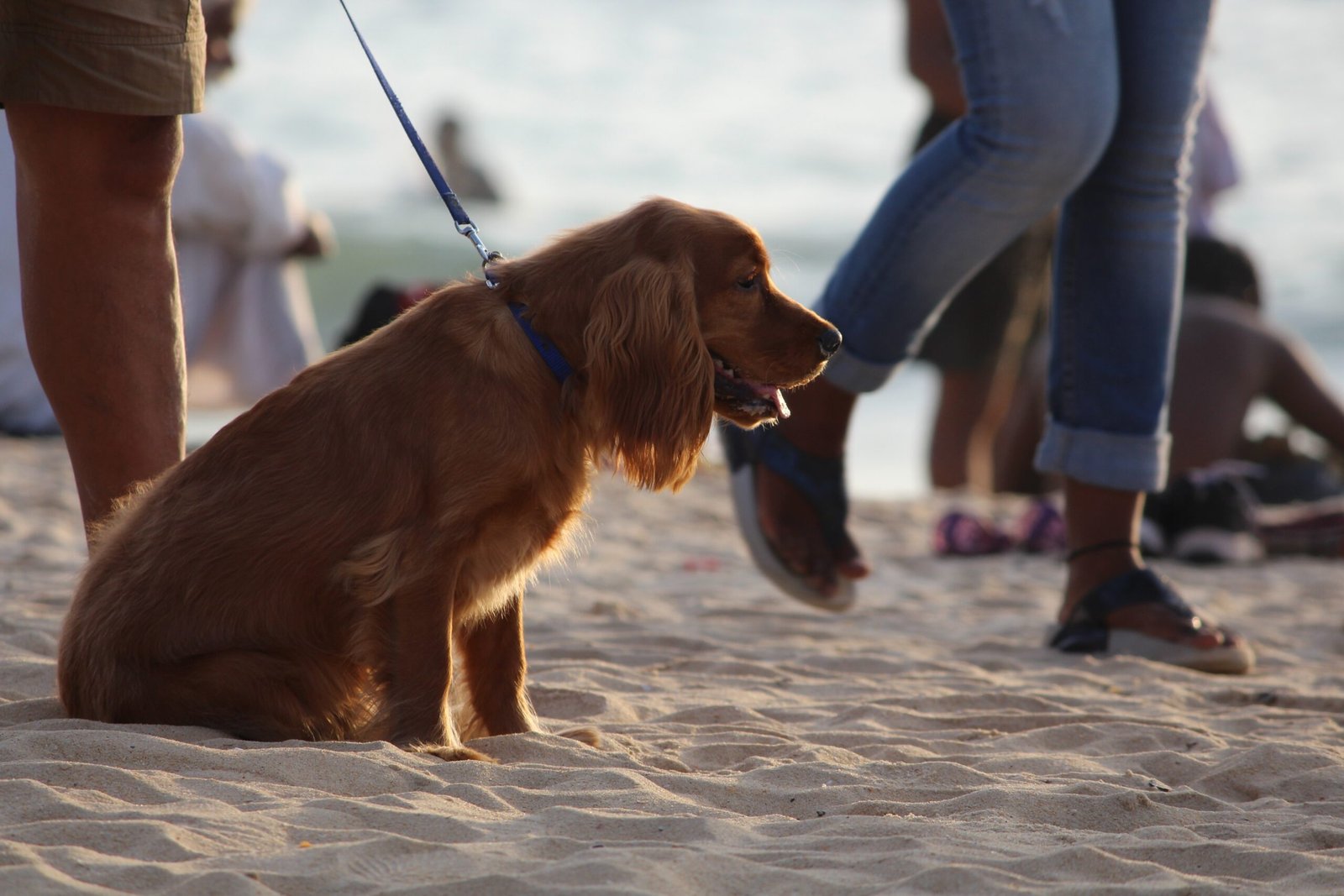Dogs may not use words, but they have plenty of ways to show when they’re feeling lonely. From constant barking to clingy behavior or even loss of appetite, these signs can be easy to miss if you’re not looking closely. Understanding these signals helps you respond with comfort—like adding more playtime, mental stimulation, or just quality cuddles. Every dog craves connection, and even small changes can lift their spirits. Being there for your pup when they feel low strengthens your bond in the most heartwarming way.
Unusual Barking or Whining

Sometimes, the first sign that your dog is feeling lonely is in the sounds they make. Dogs are vocal creatures, and when they’re left alone or feeling isolated, they might express this with excessive barking, whining, or even howling. You may notice your usually quiet pup suddenly making noise when you’re about to leave or right after you’re gone. This isn’t just attention-seeking—it’s a heartfelt plea for company and comfort. Dogs often use their voice to try to connect with you, and a lonely dog’s bark might sound more desperate or prolonged. Think of it as their way of saying, “Don’t leave me alone!” Paying attention to these vocal changes can help you catch loneliness early.
Destructive Chewing or Digging

A lonely dog can turn into a little tornado, leaving behind chewed shoes, torn pillows, or holes in your backyard. This destructive behavior is often a sign your dog is looking for stimulation or a way to cope with their feelings. Dogs don’t destroy things to punish you—they’re simply bored, anxious, or trying to release pent-up energy. If you come home to chaos after a long day away, it might be your dog’s way of managing their loneliness. This is especially common in breeds with lots of energy or intelligence, as they need more mental and physical engagement to feel secure and happy.
Excessive Sleeping

While dogs love a good nap, an unusually sleepy pup could be feeling lonely or even depressed. When there’s no one to play with or interact with, dogs might just sleep the hours away to pass the time. If you notice your dog is spending almost all day dozing, especially when left alone, it could be a sign that they’re not getting the social interaction they crave. Unlike healthy, balanced rest, this kind of sleeping is more about escaping boredom or sadness than actual physical need. Think of it as their way of tuning out the loneliness.
Loss of Appetite

Just like humans, dogs can lose interest in food when they’re lonely or sad. If your dog suddenly turns up their nose at treats or skips meals when you’re not around, loneliness could be the culprit. This change can be subtle or dramatic, but it’s always a sign that something isn’t right. Dogs thrive on routine and connection, and mealtime is often a highlight of their day. When that excitement fades, it’s a clear message that they’re missing you or feeling disconnected.
Following You Everywhere
Does your dog stick to you like glue the moment you get home? While some dogs are naturally clingy, an increase in this behavior can mean your pup is feeling extra lonely. They might follow you from room to room, never letting you out of their sight. This shadowing is their way of saying, “I missed you, and I don’t want to be left alone again.” It’s sweet, but it can also be a silent plea for more attention and reassurance. Dogs are pack animals by nature, and when their “pack” is gone, they feel it deeply.
Pacing or Restlessness

Have you noticed your dog pacing back and forth, unable to settle down? Restlessness is a classic sign of a lonely or anxious dog. They might circle the house, wander aimlessly, or constantly check doors and windows for your return. This behavior is like a physical manifestation of their inner worry and longing for companionship. Imagine how you’d feel waiting for a loved one to come home—you might fidget or look out the window, too. For dogs, this pacing is a way to cope with their solitude.
Excessive Licking or Self-Grooming
Some dogs respond to loneliness by obsessively licking themselves or even developing bald spots from over-grooming. This self-soothing habit is similar to how humans might bite their nails when anxious. It provides a temporary distraction from their feelings but can lead to skin problems or infections if it goes unchecked. If you spot your dog licking their paws or body much more than usual, it’s worth considering whether loneliness is the root cause.
Loss of Interest in Play

A playful dog who suddenly loses interest in their favorite toys or games might be struggling with loneliness. Dogs love to engage with their family, and playtime is one of the best ways to bond. When left alone too often, some dogs stop showing enthusiasm for toys or activities they once loved. This withdrawal is a quiet, heartbreaking sign that your dog’s emotional needs aren’t being met. Restoring their spark often starts with spending more quality time together.
Changes in Bathroom Habits
Loneliness and anxiety can lead to unwelcome surprises on your carpet or floor. Dogs who are feeling neglected may start having accidents in the house, even if they’re fully house-trained. This is usually not a deliberate act but rather a symptom of stress or emotional upheaval. If your dog starts breaking their bathroom routine for no apparent medical reason, it’s time to look at their emotional well-being.
Desperate Attempts to Escape
Some dogs will go to great lengths to find company, even if it means trying to escape the yard or house. If your dog suddenly becomes an escape artist, digging under fences or darting out the door, they might be searching for companionship or adventure to fill the void of loneliness. This behavior can be dangerous, but it signals a cry for help—a need for more interaction and stimulation in their daily life.
Excessive Greeting Behavior
A dog that greets you with over-the-top excitement, jumping, barking, or even spinning in circles, could be showing signs of loneliness. While happy greetings are normal, an exaggerated or frantic welcome often means your dog has been feeling alone and is overwhelmed with joy at your return. This outburst of affection is their way of expressing just how much they’ve missed you. It’s heartwarming, but it can also be a sign that they’re struggling with too much solitude.
Depressed or Withdrawn Demeanor
A lonely dog might start to seem downcast or uninterested in their surroundings. You might notice them lying alone in a corner, avoiding eye contact, or not responding to their name. This withdrawal is very much like depression in humans—a lack of motivation and a sense of sadness. Dogs are highly sensitive to the emotional climate of their home and can easily pick up on changes or absence. Their silence often speaks volumes.
Obsessive Watching of Doors and Windows

Does your dog spend a lot of time staring at the door, waiting for you to come home? This behavior is a classic sign of loneliness. Dogs are creatures of habit, and they quickly learn the patterns of your comings and goings. When you’re not there, they might watch for hours, hoping to catch the first glimpse of you returning. It’s a touching reminder of the loyalty and love that dogs have for their humans.
Ignoring Other People or Pets

Sometimes, a lonely dog will withdraw not just from you, but from everyone around them. They might avoid interacting with family members, guests, or even other pets in the house. This social withdrawal is often a sign that your dog is feeling disconnected or overwhelmed by their emotions. It’s important to recognize this shift and find ways to help your dog feel included and reassured.
Lack of Enthusiasm for Walks

A dog who suddenly loses interest in walks or outdoor adventures might be struggling with emotional loneliness. Walks are usually a highlight for any pup, so a lack of excitement can be a red flag. This change may stem from a deeper sense of sadness or isolation. If your dog seems reluctant to leave the house or doesn’t perk up at the sight of a leash, it’s worth looking at their emotional health as well as their physical well-being.
How to Comfort a Lonely Dog: Quality Time Together

One of the best ways to comfort a lonely dog is simply to spend more time with them. Your presence is their greatest joy, whether it’s a cuddle on the sofa, a game of fetch, or a gentle stroll around the block. Dogs crave connection, and even a few extra minutes of undivided attention can make a world of difference. Make time each day to really engage with your dog—look into their eyes, speak softly, and show them they matter.
Engaging Toys and Puzzles
When you can’t be there, interactive toys and puzzle feeders can keep your dog’s mind busy and help stave off loneliness. Try rotating different toys to keep things fresh and exciting. Puzzle feeders challenge your dog’s brain and reward them with treats, offering both stimulation and comfort. This simple solution can turn alone time into a fun, enriching experience.
Socialization with Other Dogs

Arranging playdates with other friendly dogs or enrolling your pup in a reputable doggy daycare can provide valuable social interaction. Dogs are naturally social animals, and time spent with their canine peers can boost their mood and reduce feelings of isolation. Supervised play can help your dog build confidence, learn new social skills, and return home happily tired.
Comforting Scents and Sounds
Leaving an item of your clothing with your dog can provide comfort through your familiar scent. Some owners also find that leaving the radio or TV on with calming music can help fill the silence and soothe their pet. These small touches can remind your dog that they’re not truly alone, even when you’re away. It’s like sending a little piece of yourself to keep them company.
Establishing Predictable Routines
Dogs thrive on routine and knowing what to expect each day. By sticking to regular feeding times, walks, and play sessions, you help your dog feel secure and less anxious about being alone. A predictable schedule can help ease the sting of separation and give your dog something to look forward to. Consistency is key in making your dog feel safe and loved, no matter how busy life gets.
At the end of the day, your dog just wants to feel connected and loved. Recognizing the signs of loneliness helps you step in before it turns into stress or bad behavior. A little extra attention, play, or even just being present can make a world of difference. Dogs thrive on companionship—and your effort to comfort them deepens the bond you share. After all, a happy pup makes for a happier home!
Jen is a passionate nature lover and ocean conservationist. She has dedicated her life to protecting the environment and preserving the beauty of the natural world. Growing up in a small coastal town, Jen sincerely appreciated the ocean and its inhabitants. She has spent countless hours exploring the shoreline, learning about the creatures that inhabit the waters, and advocating for their protection. Jen is an active member of ocean conservation organizations, and she is committed to educating the public about the importance of conserving wildlife and the natural environment.





